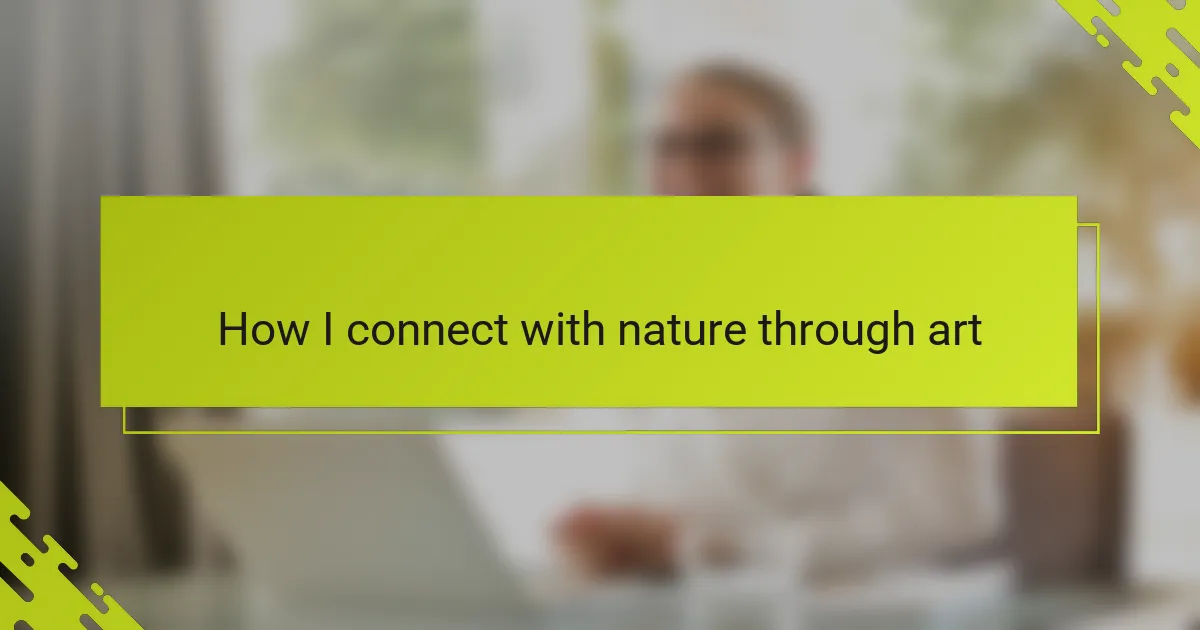Key takeaways
- Queer women culture celebrates diverse identities and experiences, emphasizing authenticity and connection through shared stories and creative expressions.
- Nature serves as a metaphor in queer art, reflecting fluidity and resilience, with artists using it to explore and express their identities.
- Inclusive art spaces foster genuine expression by prioritizing accessibility and diverse representation, enabling all voices to be heard and valued.
- Sharing art within the community cultivates connection and understanding, transforming personal expressions into collective narratives of resilience and support.
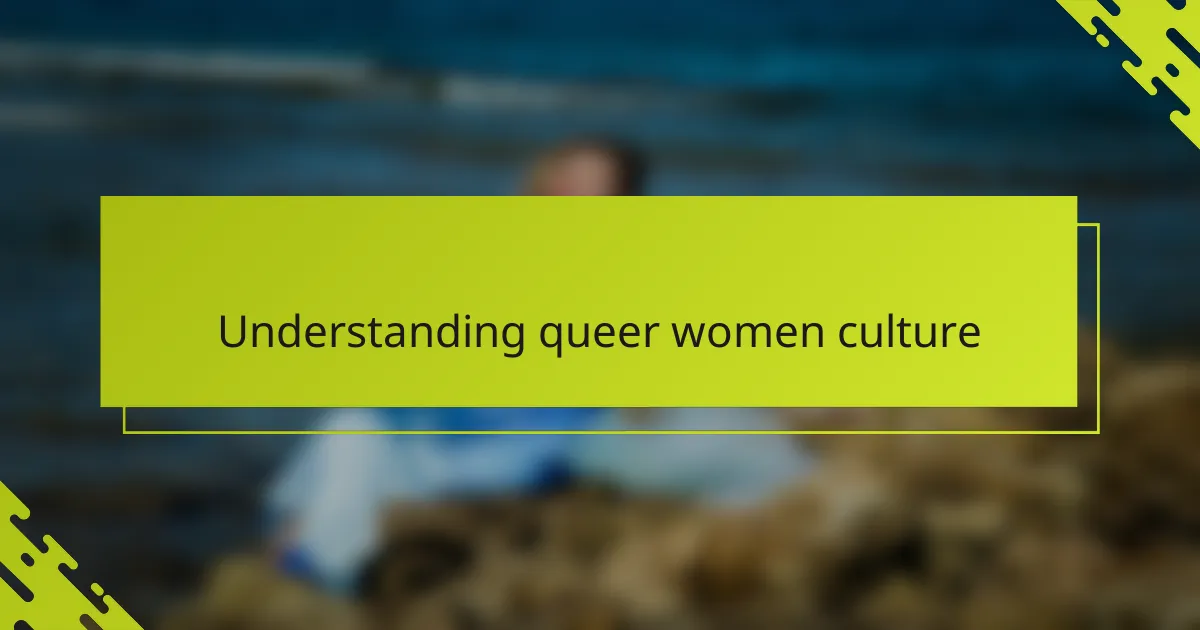
Understanding queer women culture
Queer women culture is a vibrant tapestry woven from diverse experiences, identities, and creative expressions. I find that understanding this culture means embracing its fluidity—there’s no single story or definition, just a mosaic of voices that challenge norms and celebrate authenticity. Have you ever considered how art becomes a language uniting these varied narratives, giving shape to feelings that words alone can’t capture?
In my experience, queer women culture thrives on connection and visibility, often carving out spaces where joy, resistance, and love coexist. It’s not just about identity labels; it’s about shared journeys and the courage to reveal parts of ourselves that society might overlook or misunderstand. This culture inspires me deeply—it’s a reminder that authenticity fuels creativity in ways that resonate beyond personal boundaries.
What does it mean to truly understand queer women culture? To me, it’s listening with empathy and allowing space for stories that might otherwise be silenced. It’s about recognizing the beauty in complexity and the power that comes from embracing all facets of identity. Through this lens, art isn’t just expression—it becomes a bridge to deeper understanding.
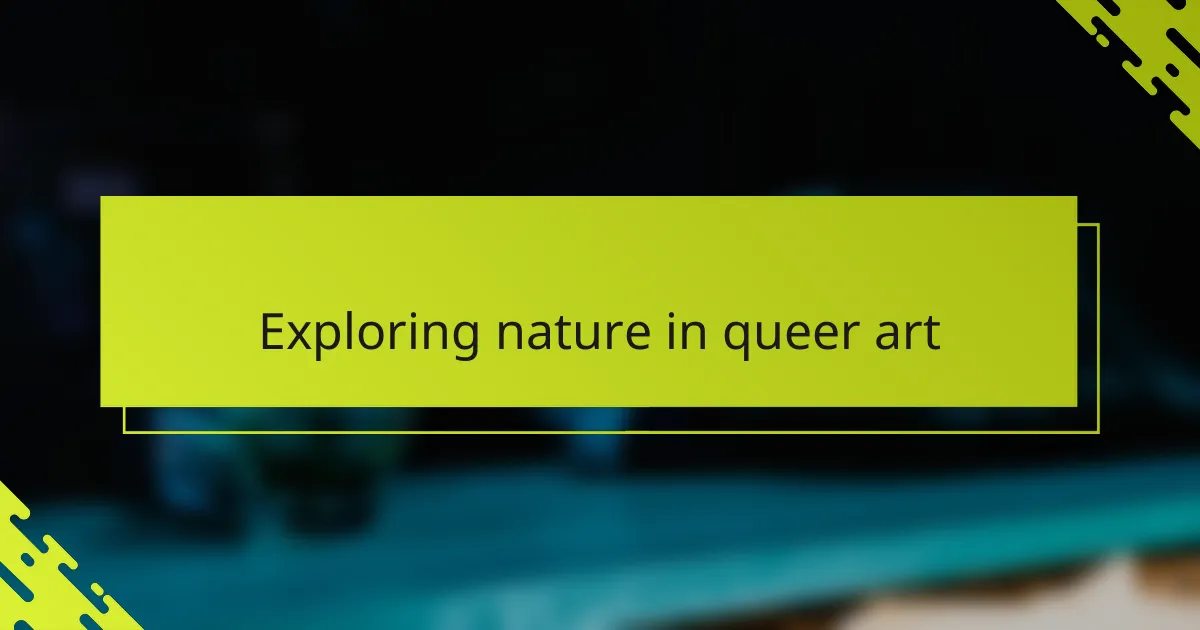
Exploring nature in queer art
Nature has always felt like a quiet collaborator in my art, especially within the queer community where the natural world often mirrors our fluidity and resilience. Have you noticed how the changing seasons reflect the shifts in identity and emotion we experience? For me, painting wildflowers or tangled branches is a way to explore those same complexities without needing to say much.
I remember creating a piece after a long walk in the woods, where every leaf seemed to whisper stories of survival and adaptation. That artwork became more than colors on canvas—it was a conversation between my queer identity and the relentless, beautiful pulse of nature. Doesn’t nature’s ability to thrive in diverse forms inspire you to embrace your own unique expression?
In queer art, nature isn’t merely a backdrop; it’s a living symbol of growth and transformation. By weaving natural elements into their work, queer artists reclaim spaces often overlooked, much like our own histories and identities. This connection challenges me to see nature as both refuge and revelation—a source of strength in the face of invisibility.
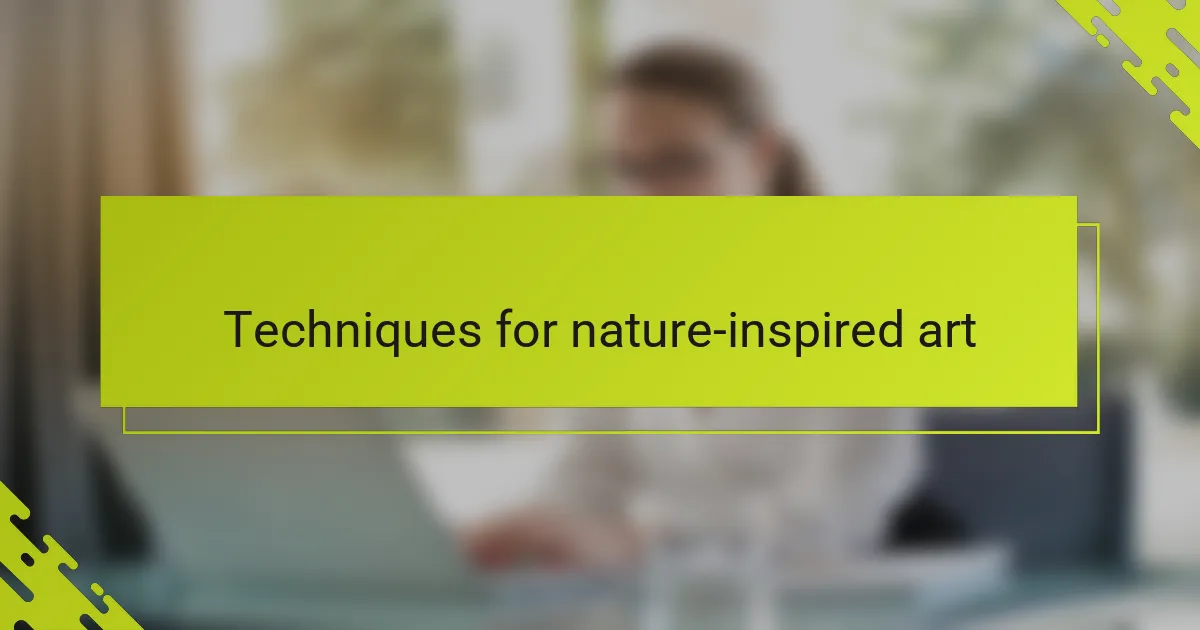
Techniques for nature-inspired art
One technique I often return to is plein air painting, which means creating art outdoors. Being directly immersed in nature—feeling the breeze, hearing the birds—brings an immediacy to my work that studio sessions can’t replicate. Have you ever tried this? I find that it deepens my senses and sharpens my ability to capture fleeting moments, making the art feel alive.
Another way I connect is through collage, combining natural materials like leaves, petals, or even soil with traditional mediums. This tactile approach allows me to physically intertwine nature with my narrative, creating textures that tell stories beyond paint or ink. It feels like holding a piece of the earth in my hands, reminding me how deeply rooted my identity is in the natural world.
Sometimes, I experiment with abstraction, where I let the colors and shapes inspired by landscapes guide me rather than replicating exact scenes. This technique mirrors how queer identity often resists clear definitions—fluid, evolving, and nuanced. Doesn’t it feel empowering to create art that reflects both internal and external landscapes without being constrained by realism? For me, it’s a way to honor complexity without needing to explain everything.
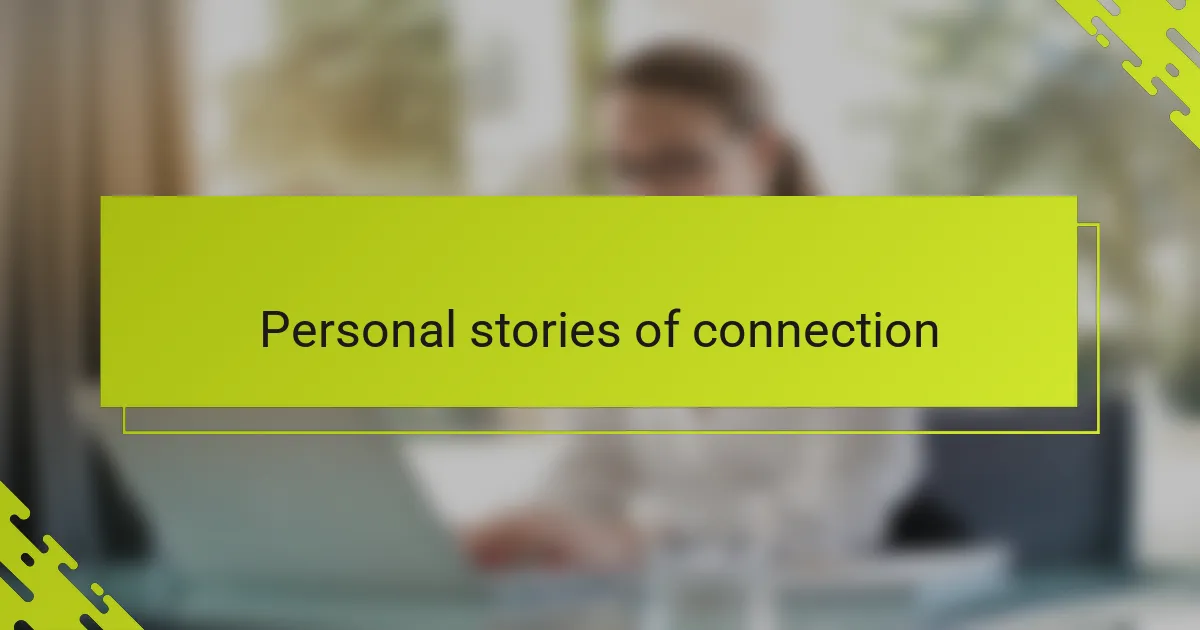
Personal stories of connection
I recall one afternoon, sitting by the riverbank, sketchbook in hand, where the gentle ripple of water seemed to echo the fluidity I feel within myself. It was in that quiet moment of observation and creation that I truly sensed a merging of my queer identity with the natural world, as if the two were quietly affirming each other. Have you ever found that a simple walk outdoors can open up unexpected channels for self-understanding?
Sometimes, I paint after dusk, capturing the soft shadows and muted colors of twilight—a time that feels as in-between and liminal as many queer experiences. The calm uncertainty of that hour invites me to explore vulnerability through brushstrokes, revealing parts of myself that daylight might hide. Isn’t it amazing how nature offers a mirror to our internal landscapes, even in moments of uncertainty?
There was a time when I gathered fallen leaves during a fall hike and pressed them into my art journal, letting their varied shapes and hues become part of my story. Handling those fragile pieces of the earth, I felt a profound kinship with cycles of change and renewal, reminding me that just like leaves, our identities can transform without losing their essence. Have you noticed how nature’s rhythms can gently teach us to embrace change with grace?

Creating inclusive art spaces
Creating inclusive art spaces means more than just opening doors—it’s about cultivating environments where all queer women feel seen, heard, and valued. I’ve found that when artists and audiences come together with respect and openness, the space transforms into a sanctuary for authentic expression and connection. Have you ever walked into a room and instantly felt that your whole self could exist there without hesitation?
For me, the texture of inclusion is woven through deliberate choices—using accessible language, diverse representation, and gentle facilitation that invites participation without pressure. It’s in those moments of shared vulnerability and celebration that art becomes a powerful tool for community-building. Don’t we all crave places where our stories can be told freely, without fear or exclusion?
Sometimes, creating inclusive spaces means recognizing and gently addressing barriers that might not be obvious at first glance: are materials affordable? Is the venue physically accessible? Is there room for multiple modes of creativity, from traditional painting to digital or performance art? I remember a workshop I attended where simply providing quiet corners and sensory-friendly options made a world of difference in allowing more people to engage fully. What small changes might we make to invite more voices into the creative conversation?
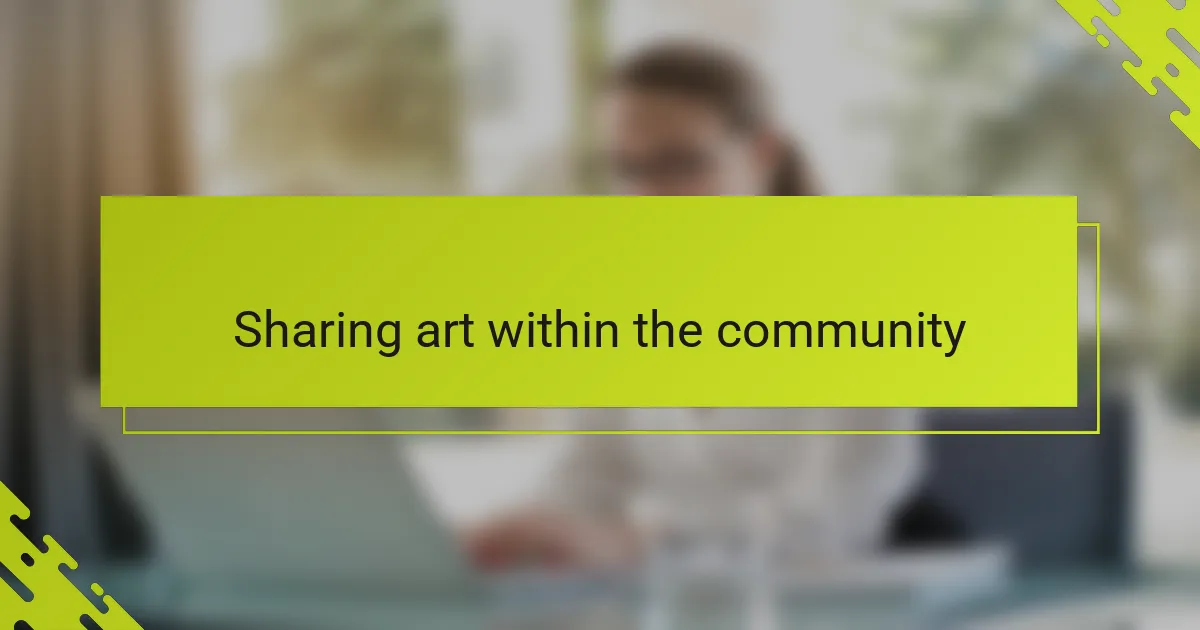
Sharing art within the community
Sharing art within the community feels like opening a window to a room full of kindred spirits—each piece carrying a piece of someone’s truth. I often find that when I share my nature-inspired works with other queer women, it sparks conversations that go beyond the visual. Have you noticed how art can become a gentle invitation to listen, understand, and connect on a level that words alone might not reach?
There was a moment at a local queer art exhibit when someone approached me, eyes bright with recognition, sharing how my painting of a tangled forest had mirrored their own journey through identity and change. That exchange reminded me how vulnerable sharing art can build bridges, creating a shared space where personal stories intertwine with collective resilience. Isn’t it powerful when art becomes a living dialogue that nurtures both the creator and the viewer?
I also believe that sharing art online in community forums or social media groups expands these connections in surprising ways. Posting a simple image of a leaf collage or a short video of painting outdoors often invites feedback, encouragement, and stories from across the globe. How amazing is it that through these virtual spaces, our expressions of nature and queerness can ripple outward, growing a supportive network where we all feel less alone?
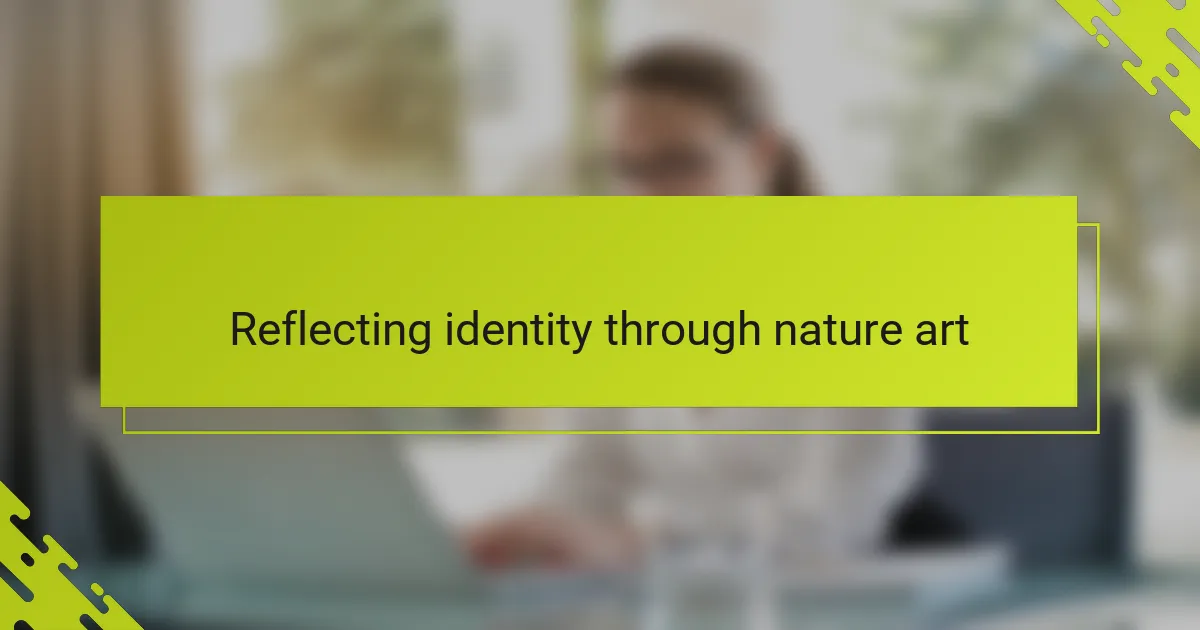
Reflecting identity through nature art
When I create nature art, I often find my queer identity woven into every brushstroke, like the way a river carves its path—unique, flowing, and uncontainable. Have you ever noticed how capturing the subtle bends of a branch or the delicate layering of petals can mirror the nuances of your own evolving self? For me, these natural forms become metaphors, silently reflecting the fluidity and strength that define who I am.
Sometimes, painting leaves that have weathered storms makes me think about resilience—not just of the natural world but of my own journey navigating identity. There’s something deeply comforting in seeing scars and imperfections celebrated in nature, reminding me that authenticity includes all our marks and changes. Don’t you find that embracing these natural imperfections allows your true self to shine more brightly?
I remember a moment while sketching a blooming wildflower, realizing its gentle unfolding echoed how I am continually discovering new facets of my identity. It struck me that just as flowers bloom in their own time, our authentic selves can reveal themselves in layers, without rush or pressure. Isn’t it something special to witness that kind of organic growth both in nature and within ourselves?
